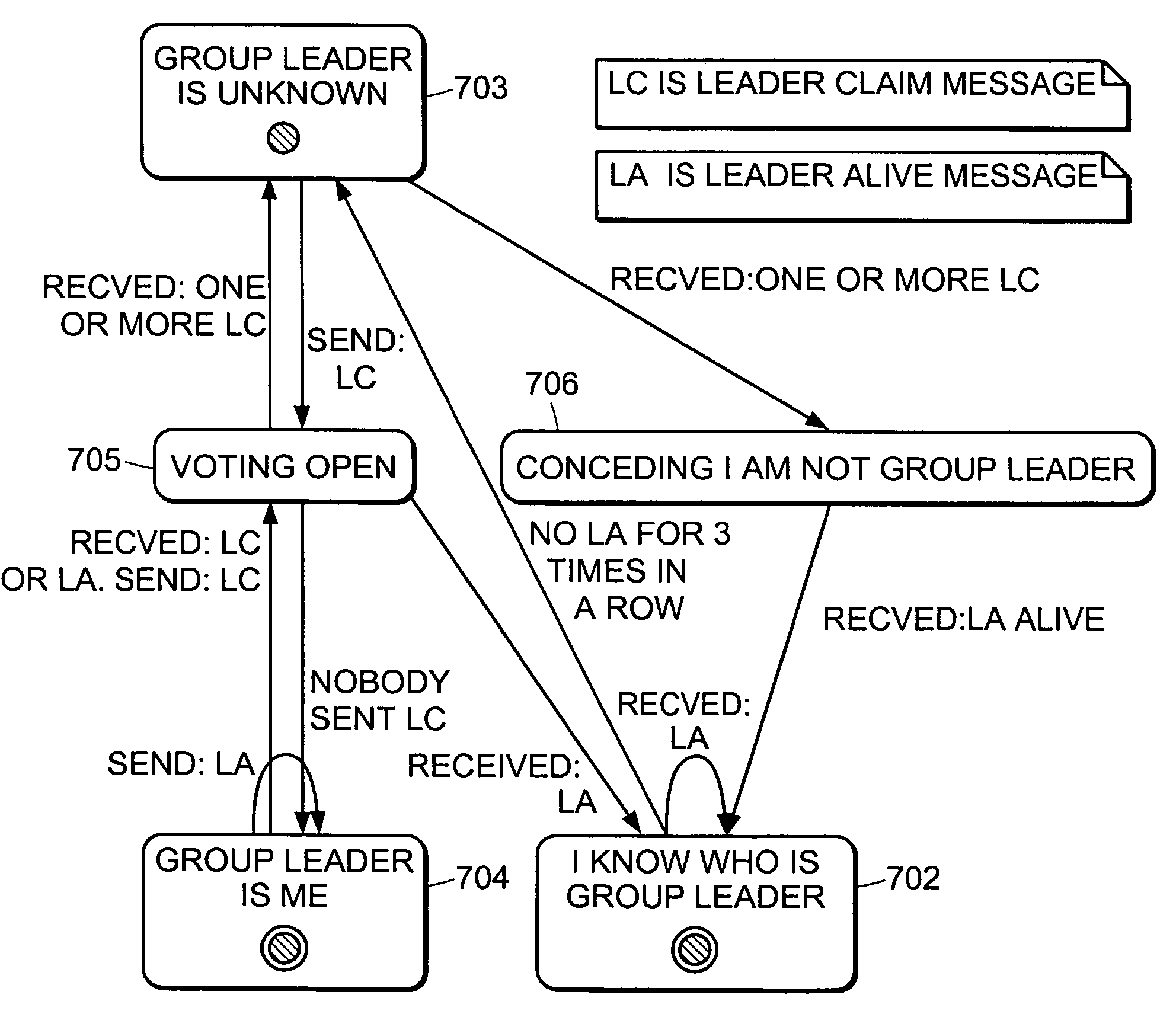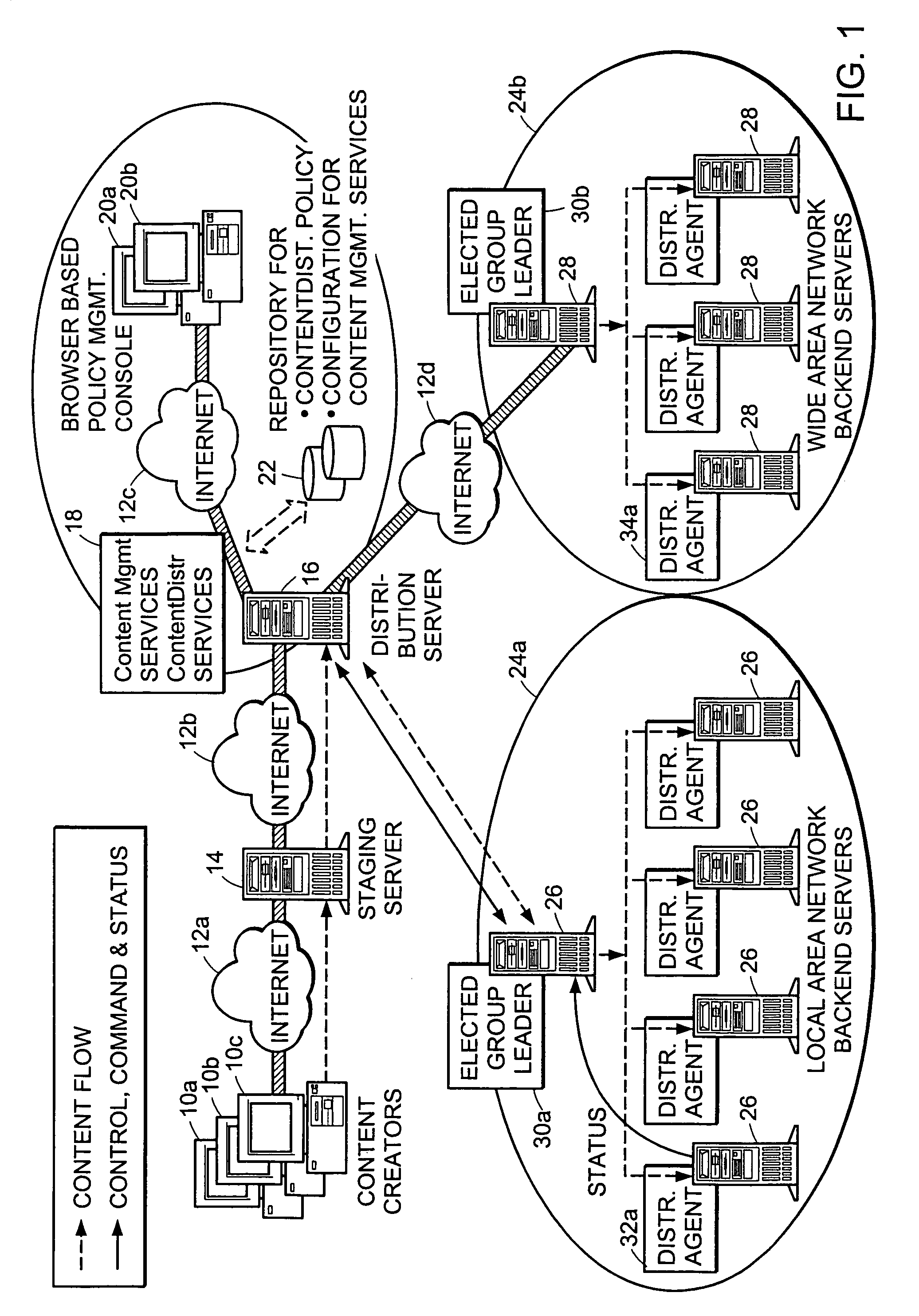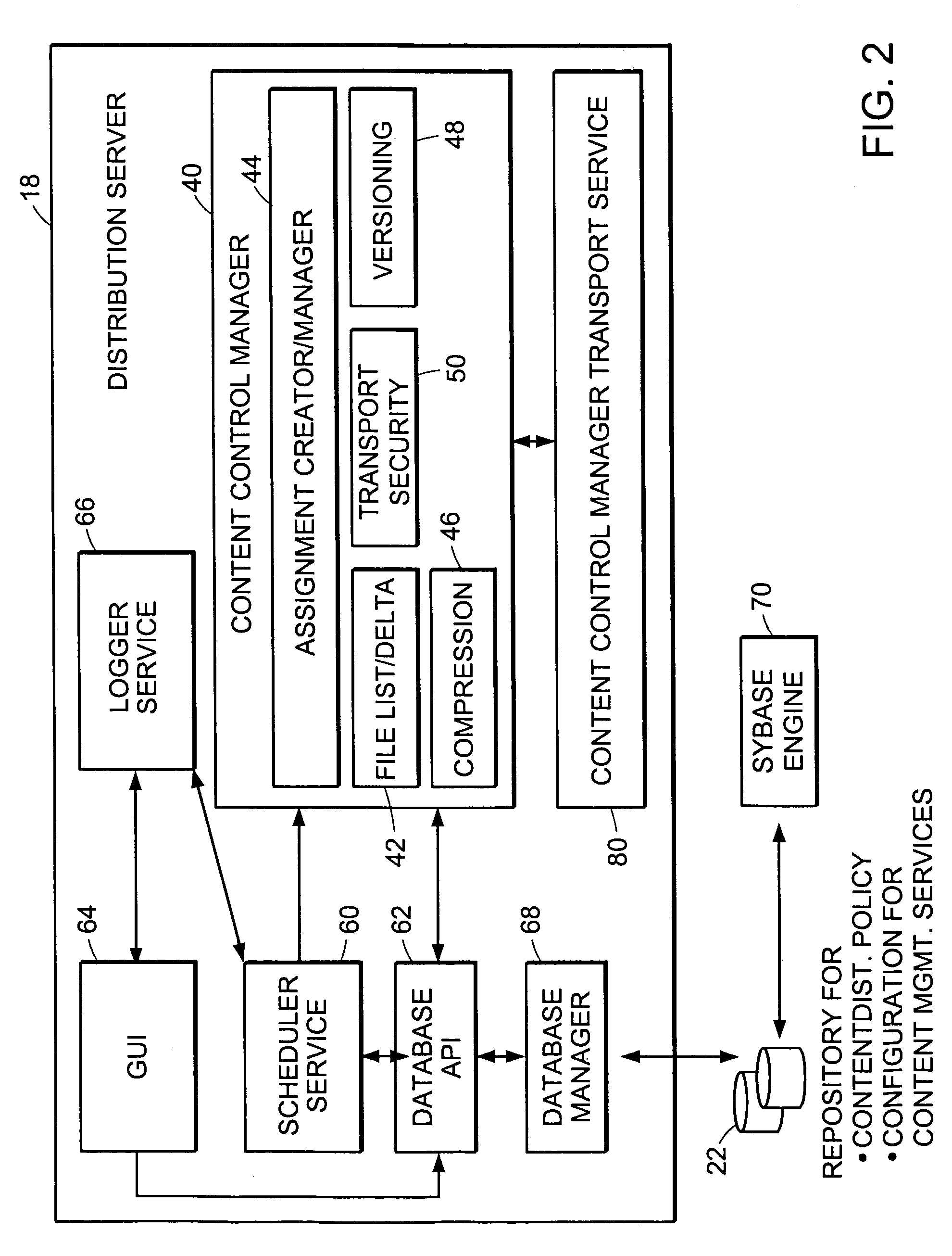Digital content creators are users who utilize workstations or other computers to create or digitize information in preparation for publication as “content.” When such content is to be shared with or published to a number of other
computer users using a
wide area network (WAN), such as the
World Wide Web (“the Web”), reliability, latency, security, and efficiency become major issues.
Latency, the measure of how much time it takes to deliver data, suffers when finite resources become overloaded, whether in the respective processors,
intermediate storage or a communications link.
Inefficiency may arise because multiple copies of data have to be retransmitted between the same source(s) and destination(s) due to lost or garbled messages.
As the number of recipient sites grows, issues of latency and efficiency complicate the architecture.
Inefficient communication protocols for reliable
data exchange amplify problems in real-time systems where latency directly determines
user satisfaction.
However, such solutions have the
disadvantage of not being flexible enough to
handle real-time load balancing.
Similarly, manual or customized actions become increasingly labor-intensive as data files proliferate and the number of servers increases exponentially, as seen in the recent growth of
the Internet.
In particular, the operation of the “Web” requires massive
data management and distribution.
Sending entire files for an update is relatively inefficient, when only a small amount of data may have actually changed out of millions of bytes in the file.
File transmission to each remote
server originates from a single, central point, and all remote servers must wait for the others accessing the same central source to receive and acknowledge the correct data before the new content goes “live.” The referenced implementation lacks the ability to intelligently schedule distribution or replication of pertinent content to different parts of the network according to the user's needs.
However, disadvantageously, the addition of separate hardware and
software at each site inherently reduces reliability, since there are more components subject to maintenance and potential failure.
In fact, the global / SITE system becomes a
single point of failure which could cripple an entire site if the unit is rendered inoperable, whether accidentally or maliciously.
This has the
disadvantage of requiring additional complexity for determination of network bandwidth at any given moment.
Furthermore, a content
distributor is required to provide a “requested delivery time deadline,” which complicates
content management by requiring each
content distribution requester to negotiate reasonable transmission times for each piece of content.
This approach is focused entirely on
bandwidth allocation, and fails to address issues of network dynamics, such as regroupings of the target servers for load-balancing.
Whatever efficiency may have been derived from the '701 is substantially completely lost when the entire content must be retransmitted to an additional
server, making a huge waste of bandwidth for every node in the
multicast path which already received the file.
The problem grows geometrically as the number of servers increases and multiple copies of selected files are required at each remote
web site.
LANs, by their nature, are limited in their ability to span long distances without resorting to protocol bridges or tunnels that work across a long-distance, point-to-point link.
Since most LAN protocols were not designed primarily for
Wide Area Networking, they have features that can reduce reliability and efficiency of the LAN when spanning a WAN.
But when the LAN is connected to an
IP router through
the Internet to another
router and other LAN segments, the multicast becomes difficult to manage, and reliability suffers.
In particular, most Internet routers only
handle point-to-point, store-and-forward packet requests and not multicast packet addresses.
This puts the burden on the sender to laboriously transmit a separate copy to each intended remote recipient, and to obtain a positive
acknowledgement of proper
receipt.
A
disadvantage of the disclosed method is that it relies upon either a network broadcast of data at the
application layer, or a multicast IP implementation based upon the standardized RFC 1112 Internet specification.
Broadcast is an extremely inefficient protocol in all but very limited circumstances, since it requires that each and every recipient process an incoming message before the recipient can determine whether or not the data is needed.
Even multicast IP has the disadvantage of being based upon the unwarranted assumption that
the Internet routers will support the standard multicast feature, which is actually very rare.
This has the disadvantage of not being applicable to most of the present Internet, or in any
private network that does not implement multicast according to the standard.
This solution has the disadvantage of requiring configuration and maintenance of static lists of servers in each FanOut unit.
It also does not provide any flexibility for changing which back-end servers correspond to each
multicast address.
Another disadvantage of existing implementations is that they fail to deal with much of the dynamic nature of the Internet, in which servers are reallocated from time to time, or new servers are added for performance considerations.
Current implementations rely upon manual, error-prone coordination between groups of personnel who create content and those who manage the network resources.
However, disadvantageously, group leaders can be lost, such as when the system providing that service is taken offline or otherwise becomes unavailable.
The disadvantage of this approach is that each server has the same chance of becoming the leader, even though there may be numerous reasons to make a better selection.
Another disadvantage of existing systems is that load-balancing processes or service-level monitors, that may be operating simultaneous with content distributors, typically have no way to directly determine whether a particular server has the most recent version of content.
Most cache implementations also have no capability for making efficient updates when changes are small in proportion to the size of the file containing the changes.
 Login to View More
Login to View More  Login to View More
Login to View More 


